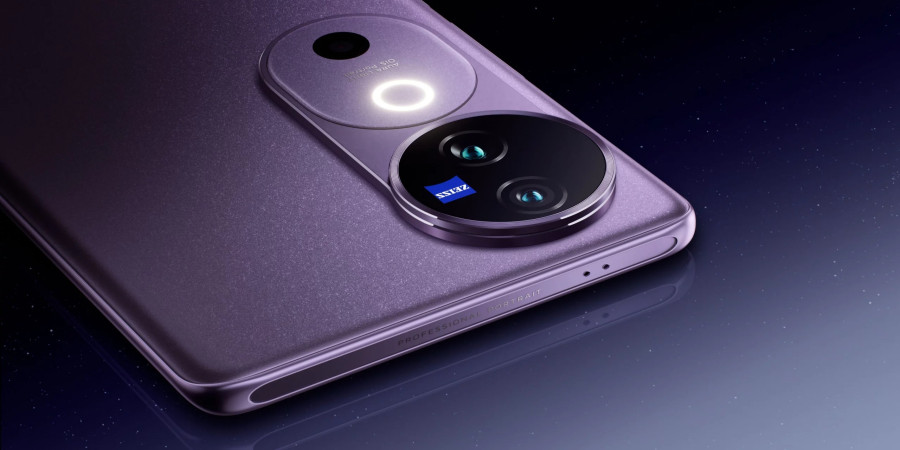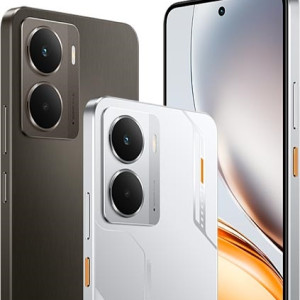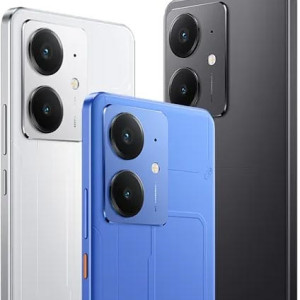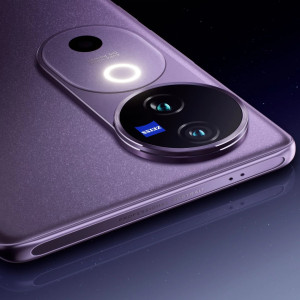Account Login
VR News
Latest Reviews
Extra
vivo V50 cameras review: A Dual 50 MP powerhouse with Zeiss precision
Feb 17, 2025

The Vivo V50 is a remarkable smartphone that places a strong emphasis on camera versatility and high-resolution photography. Its dual-camera setup on the rear consists of two powerful 50 MP sensors, each designed to cater to different photographic needs. The primary camera features a 50 MP sensor with an f/1.9 aperture and a 23mm wide lens, paired with a large 1/1.55" sensor and 1.0µm pixel size. This combination allows the main camera to capture exceptional detail with remarkable sharpness, even when cropping the image. The larger sensor and relatively large pixels enhance light intake, ensuring vibrant images with a broad dynamic range and minimal noise in well-lit conditions.
Low-light performance is another area where the primary camera excels. The wide f/1.9 aperture allows more light to hit the sensor, which is crucial for night photography. Additionally, Optical Image Stabilization (OIS) helps to minimize motion blur caused by shaky hands, allowing for slower shutter speeds and better low-light exposure. The inclusion of Zeiss optics further enhances color fidelity and contrast, delivering vivid but natural-looking images. This is complemented by the Color spectrum sensor, which ensures accurate white balance, making the Vivo V50 particularly adept at handling complex lighting scenarios. The wide aperture also contributes to a natural depth of field effect, producing a pleasing background blur (bokeh) that enhances portrait photography.
The second camera in the dual setup is a 50 MP ultrawide sensor with an f/2.0 aperture and a 15mm lens, providing an expansive 119˚ field of view. This makes it an excellent choice for capturing vast landscapes, architectural shots, and group photos. Unlike many ultrawide lenses that suffer from edge distortion, the 15mm focal length here minimizes such issues, preserving the natural appearance of subjects at the edges of the frame. The presence of autofocus (AF) enhances versatility, enabling sharp focus across a variety of shooting scenarios. However, this sensor uses a smaller 1/2.76" sensor and 0.64µm pixels, which limit its light-gathering capabilities, especially in low-light conditions. Consequently, noise control isn’t as strong as on the primary sensor, particularly in challenging lighting situations. Despite this, the ultrawide lens benefits from
Zeiss optics, ensuring consistent color science and contrast between both rear cameras.
Video recording on the Vivo V50 is versatile, supporting 4K at 30fps and 1080p at 30fps. The combination of OIS and gyro-EIS (Electronic Image Stabilization) ensures smooth and stable footage, minimizing shakes and vibrations typically associated with handheld recording. The Zeiss optics contribute to accurate color reproduction, while the color spectrum sensor adjusts the white balance, delivering a more cinematic appearance to videos. However, the absence of 4K at 60fps is a limitation for users who prefer smoother motion in videos. Additionally, the device doesn’t explicitly mention slow-motion capabilities, which could be a drawback for action enthusiasts.
Turning to the front, the Vivo V50 features a powerful 50 MP selfie camera with an f/2.0 aperture and a 21mm wide lens, ensuring highly detailed selfies with vibrant colors. The high resolution provides excellent sharpness, even when cropping or zooming in on selfies. The 21mm wide-angle perspective is ideal for group selfies, as it captures a wider scene without distorting facial features. The autofocus capability is a welcome addition, allowing users to maintain sharp focus at varying distances. However, with a smaller 1/2.76" sensor and 0.64µm pixels, the selfie camera struggles slightly in low-light environments, as the smaller pixel size reduces its light-gathering ability.
The selfie camera also benefits from Zeiss optics, maintaining consistent color accuracy and contrast. High Dynamic Range (HDR) further enhances image quality by balancing highlights and shadows in challenging lighting conditions, such as backlit environments. On the video front, the selfie camera supports 4K at 30fps and 1080p at 30fps, making it a great option for vloggers and video calls. However, unlike the rear cameras, the absence of EIS could lead to shakier footage, necessitating a steady hand or a gimbal for optimal results.
Additional features that enhance the overall camera experience include a Color Spectrum Sensor for precise color representation and white balance, and a Ring-LED Flash that provides uniform lighting for night portraits without harsh shadows. The inclusion of panorama and HDR modes adds versatility, allowing users to capture expansive scenes and balanced exposures in tricky lighting.
Despite its strengths, the Vivo V50 has some limitations. The ultrawide camera's smaller sensor size impacts its noise control and low-light performance. The lack of 4K at 60fps limits the fluidity of motion capture compared to some competitors, and the absence of slow-motion video features may disappoint those looking for dynamic shooting options. In low-light selfies, noise control could be better due to the smaller pixel size.
Overall, the Vivo V50 delivers a robust camera experience with its high-resolution sensors, versatile dual-camera setup, and advanced optics. It excels in color accuracy, dynamic range, and stabilization, making it a strong choice for photography enthusiasts who value detail and color consistency. Although its video capabilities are solid, the absence of certain high-end features means it may not satisfy all video creators. Nevertheless, the Vivo V50 is an excellent choice for users seeking high-resolution photography, vibrant colors, and versatile shooting options.
















